It’s not a secret anymore that Arsenal have one of the best academies in the world. Legends like Ray Parlour, Martin Keown, and Tony Adams were born and bred there. All of them even helped the Premier League giants to their domestic triumph in the late 1990s and early 2000s.
Today, the Gunners are shadows of their former selves. The reason is simple: they haven’t won the league title since 2004. However, one thing stays the same. Arsenal’s academy still produces fine youngsters to grace the football world. This season, another teenager comes to light up Arsenal’s hope. His name is Bukayo Saka. Without further ado, this tactical analysis will inform you how Saka gives an instant impact at the Emirates Stadium.
Player profile
Saka is originally a left-winger. Last season, he made 34 appearances, including four in the senior level. In those games, he made 14 goals and 12 assists. Such performance was the reason behind his promotion from the U-23 squad.
Arsenal’s ex-manager, Unai Emery, also used him as a left-winger this campaign. Either in a 4–2–3–1 or a 3–4–3, Saka was a useful tool in Emery’s tactics. Even better, Emery started the 18-year-old in his favourite position against another big-six club, Manchester United, last September. Furthermore, he made two goals and five assists under Emery’s leadership.
However, things change when Mikel Arteta replaced Emery at the helm. Instead of putting Saka as a left-winger, Arteta deployed the teenager as a left-back in his preferred 4–2–3–1. With only one missed game since Arteta’s arrival, Saka cemented his position as the Gunners’ main left-back option. For a fact, he has scored one goal and made four assists since. Different position, same impact.
Provides the width
In this part of the analysis, we’re going to take a look at Saka’s role in Arsenal’s 4–2–3–1. Arteta would deploy his team in an asymmetric 3–2–5, 3–2–4–1, or even 2–3–5 when they have the ball. At the back, one midfielder would drop to the left half-space while the centre-backs shift accordingly to make a temporary back three. In front of them, the right full-back would come inside to accompany the other midfielder.
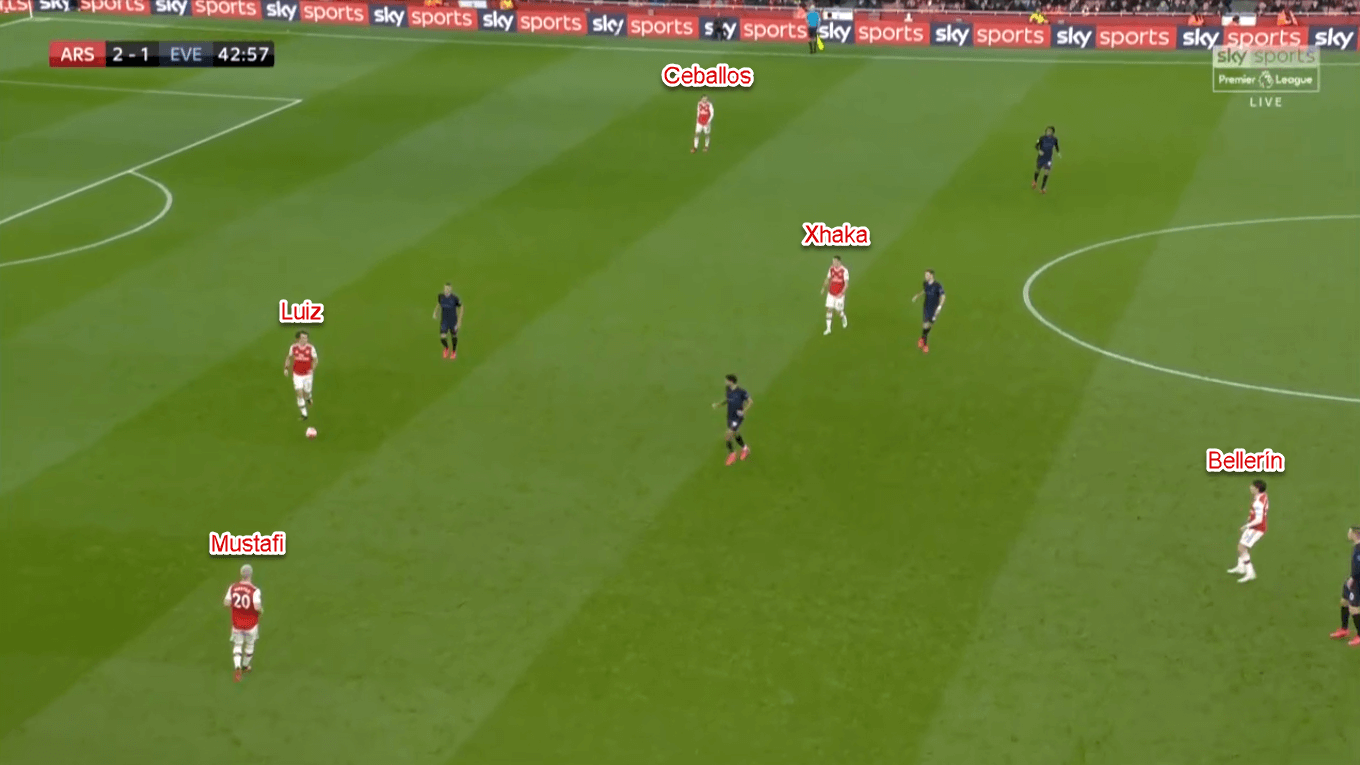
The shape would be a little lopsided sometimes since the right full-back would also stay wide at times. Upfront, there would be up to five players in the attacking line. Different to his full-back partner, Saka could be found in parallel with the attackers. The youngster has the task to provide width in the left flank while the winger in front of him tucks inside.
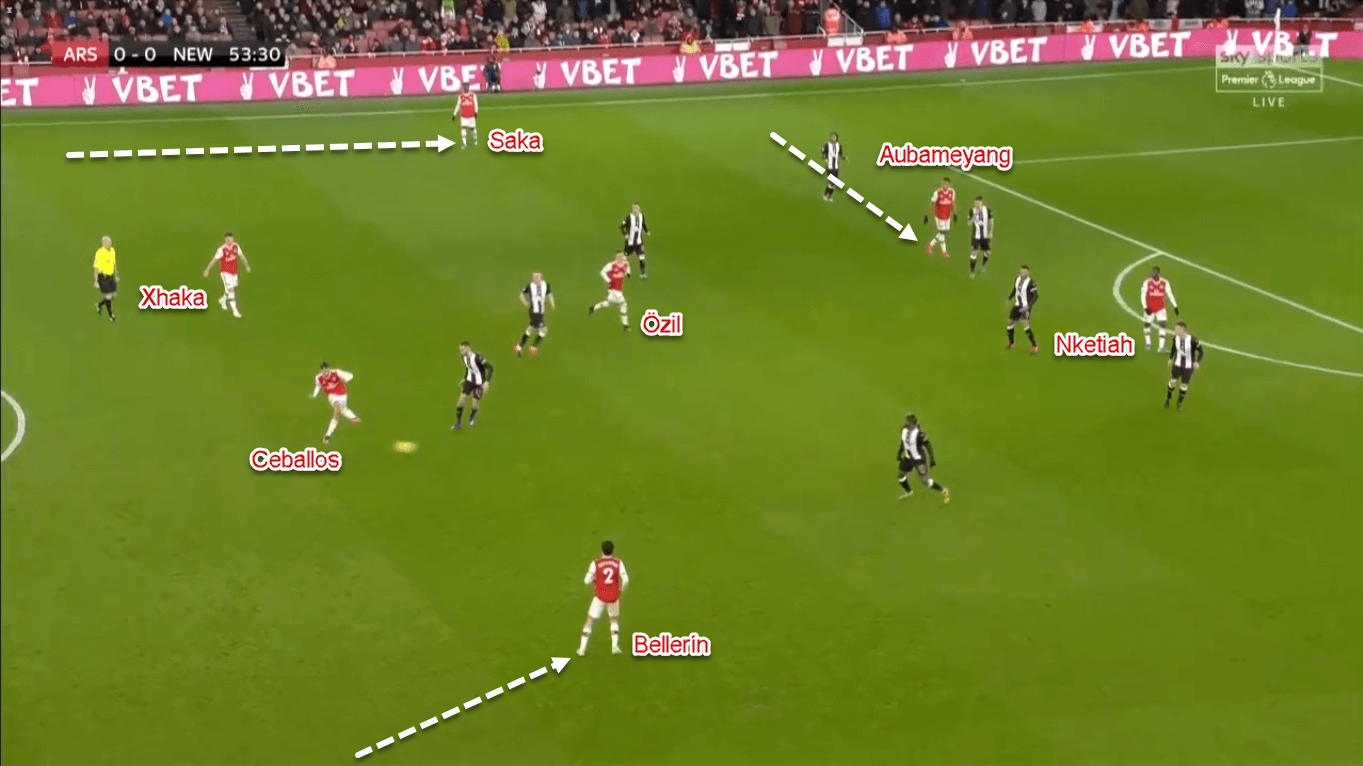
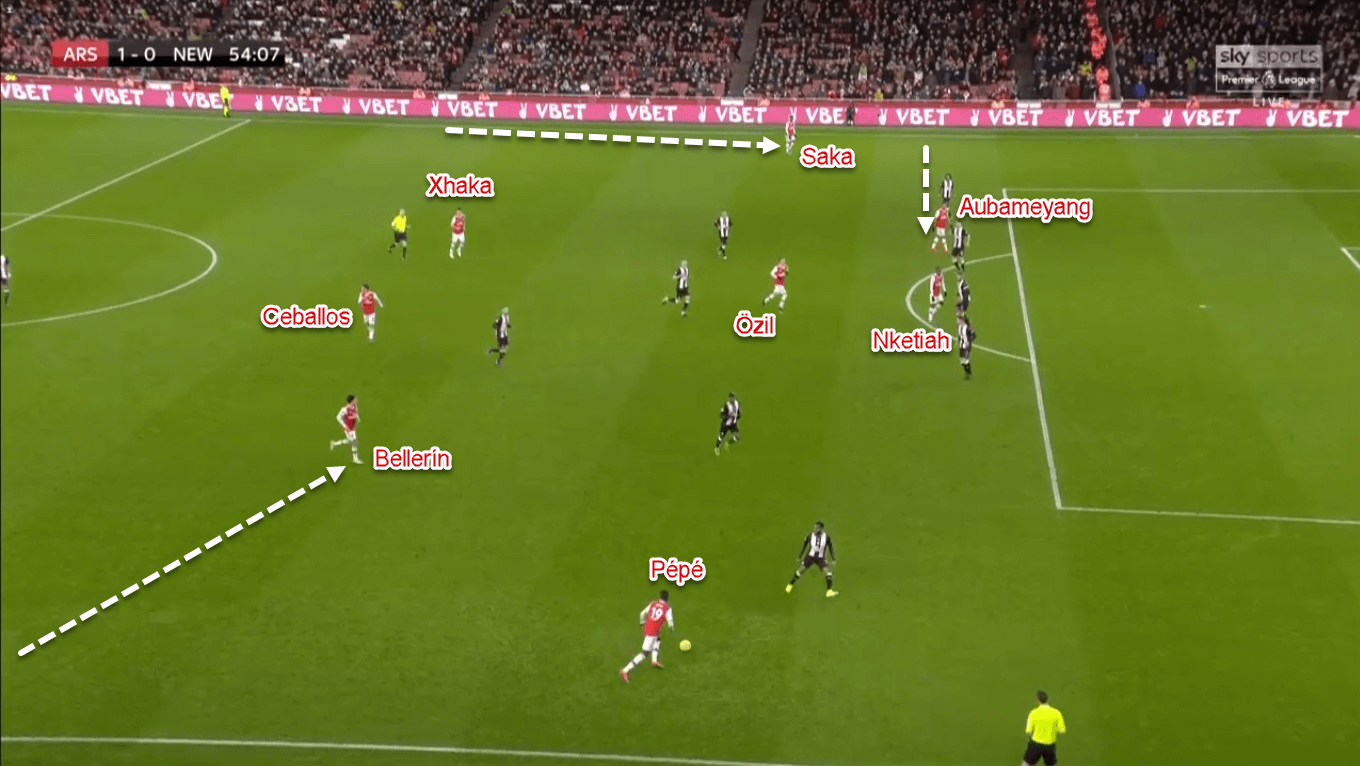
By having a tucked-inside left-winger, Saka would have ample space and time on the flank. It’s because the winger — either Pierre-Emerick Aubameyang or Gabriel Martinelli — would pull the opponents’ right-back with him; thus opening a gap for Saka to exploit. One main weapon to reach Saka is by a diagonal pass from the opposite area. The switch pass could come from one of the centre-back or the dropping midfielder.
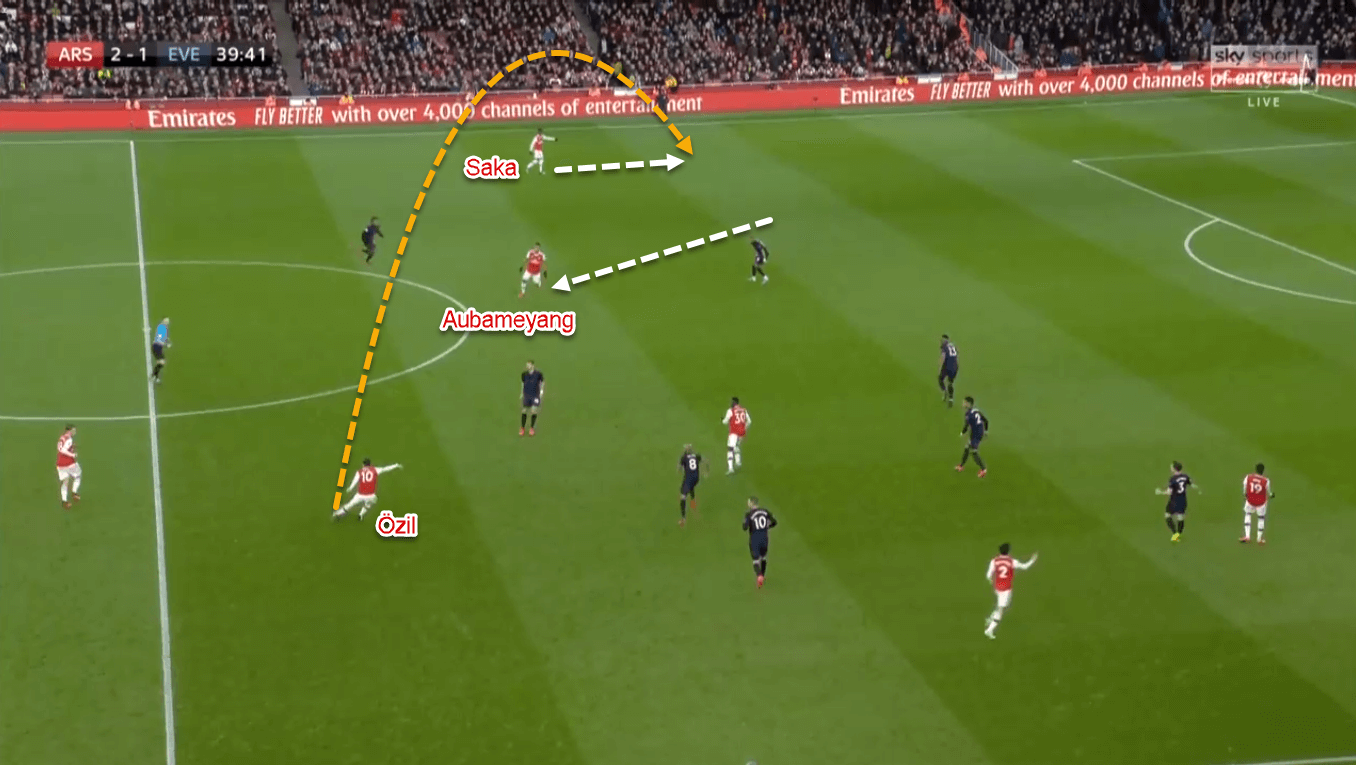
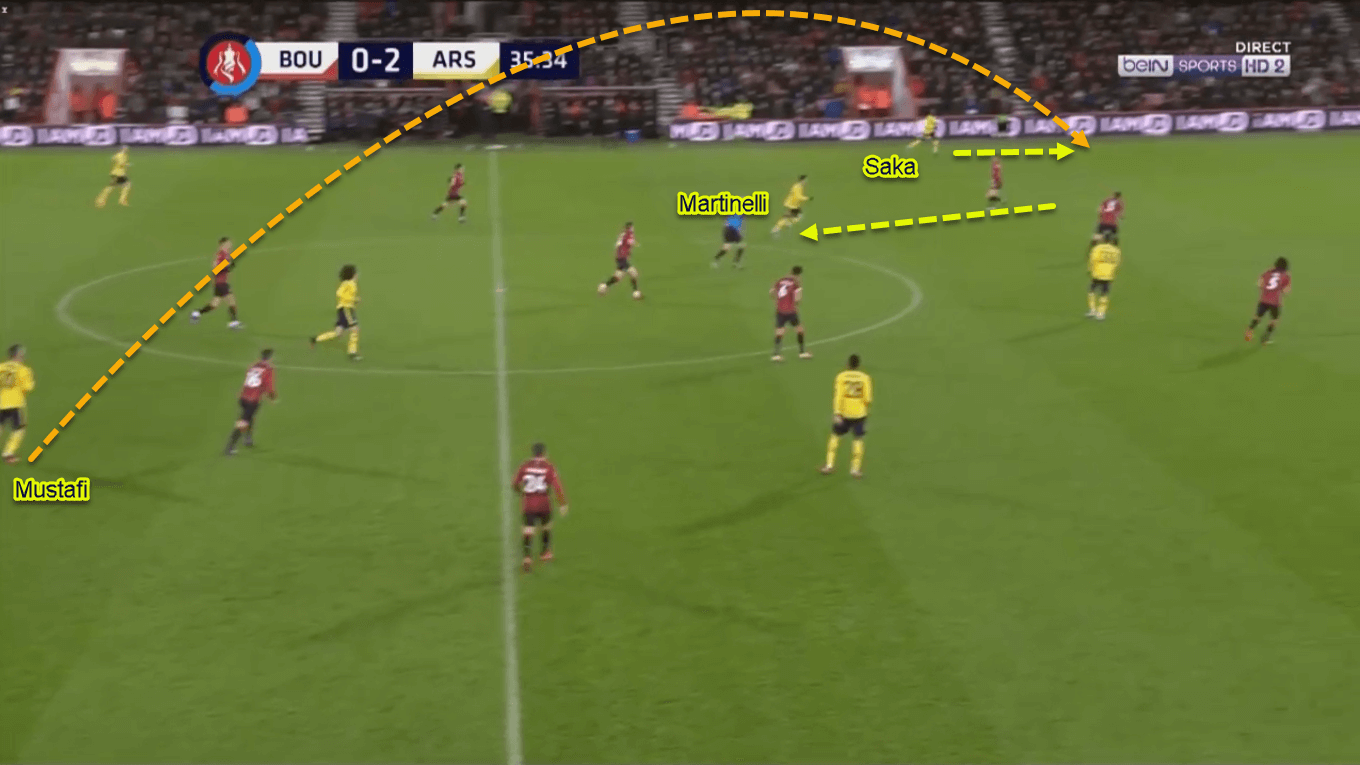
A constant threat in the final third
Saka would use overlapping runs to provide the width in the final third. In Arsenal’s attacks, Saka’s main task is to send crosses into the box. Mainly he prefers to send low-crosses because of the lack of height of Arteta’s forwards. For a fact, only Aubameyang stands taller than 181 centimetres. Even worse, he’s often played as a left-winger recently rather than a centre-forward.
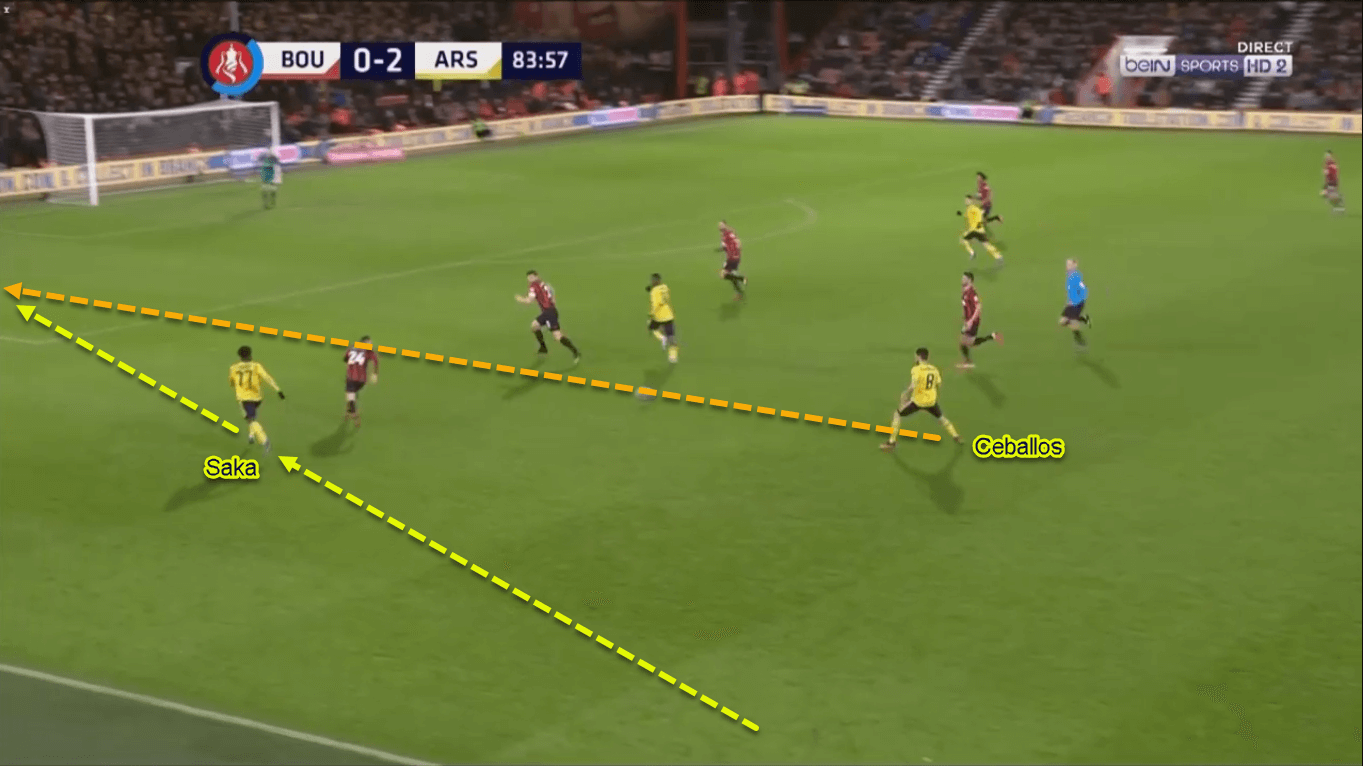
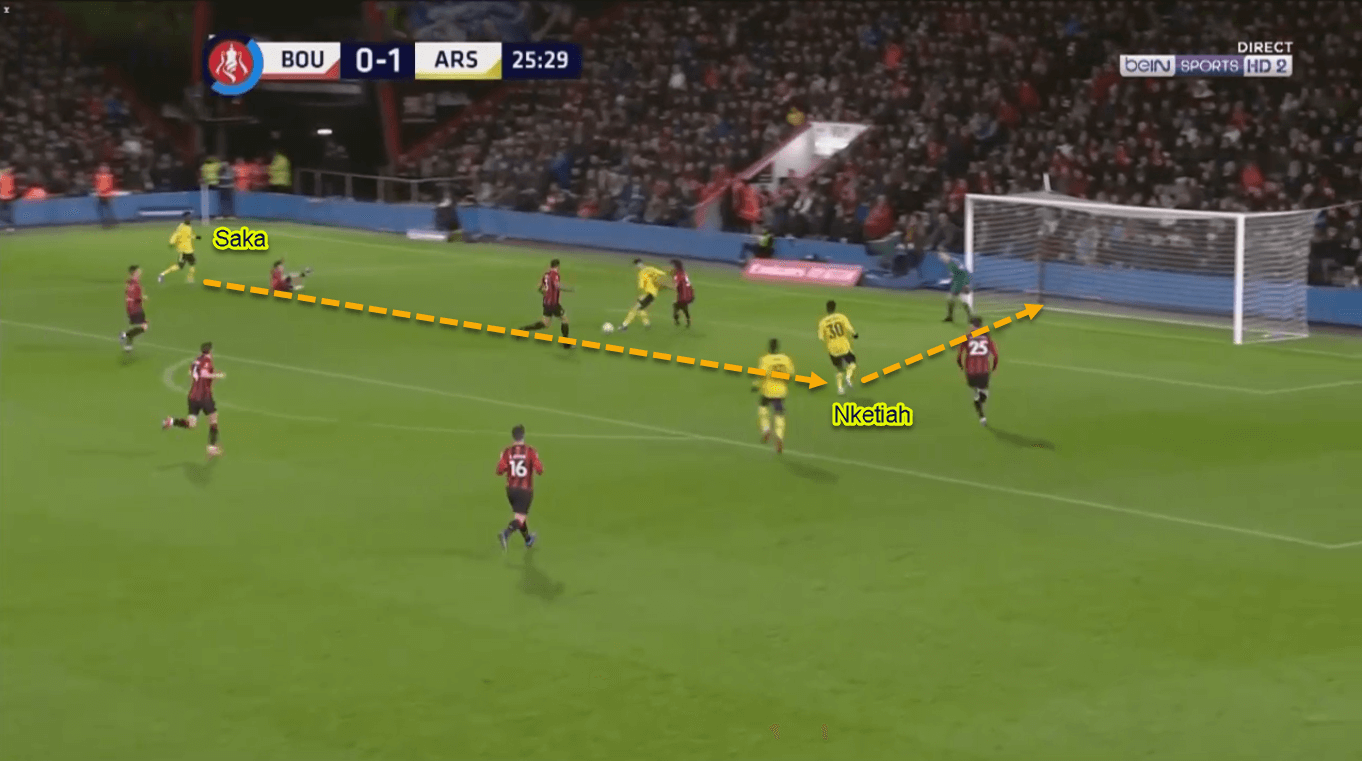
The youngster would also vary his service with whipped crosses. He would utilise this mainly when he’s positioned outside the box. The whipped crosses were used due to it’s quick and swerving nature, thus making it hard to predict for the defenders. Looking at the statistics, Saka averages 1.7 crosses per 90 minutes in the Europa League, with a success rate at 58.82%.
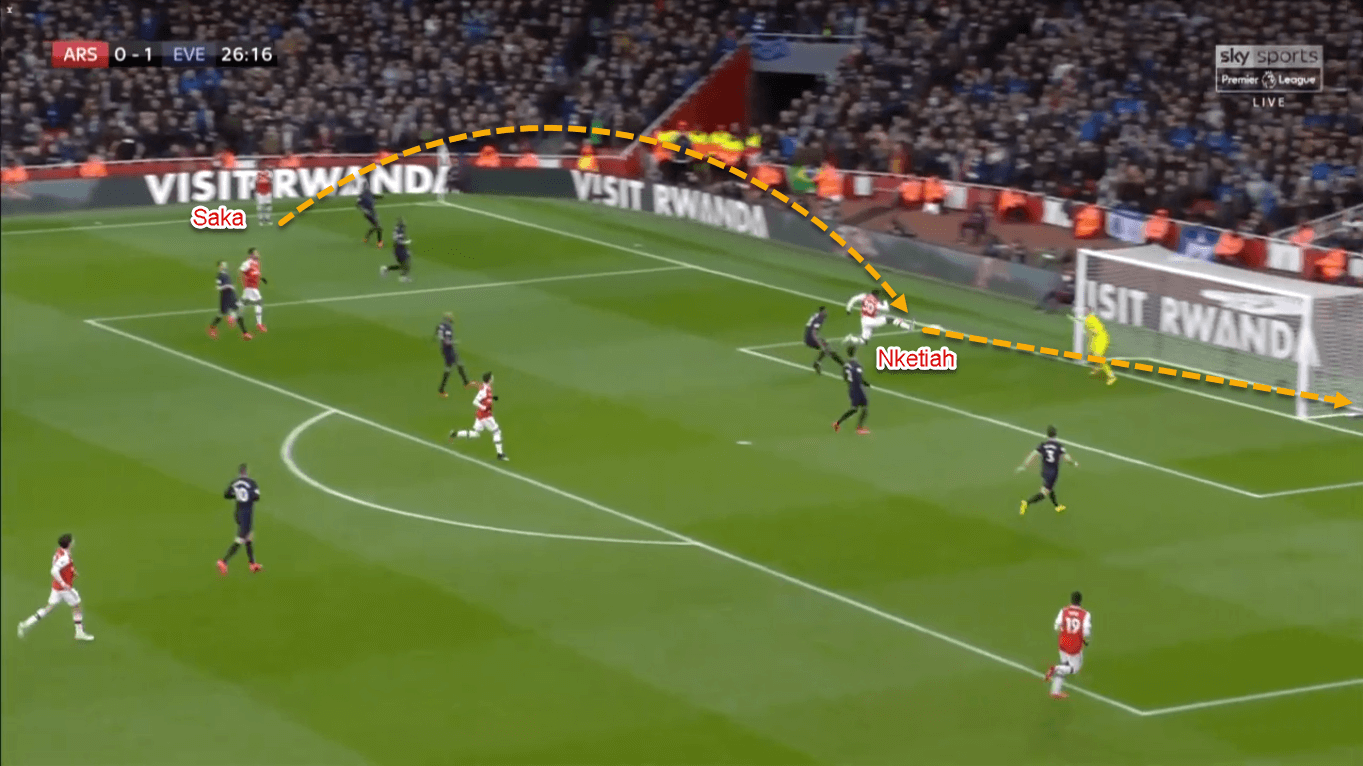
Saka’s overlapping runs are also useful for himself. He would often bomb forward into the box, receive the ball, and make a shot. Saka’s tendency to shoot doesn’t stop there. At times, he would vary his approach by driving inside to the central lane before shooting the ball. However, he would take those shots from outside the box when moving inside. The stats show that Saka has averaged 1.8 shots per game in the Europa League; fourth-highest among all Arsenal’s regulars.
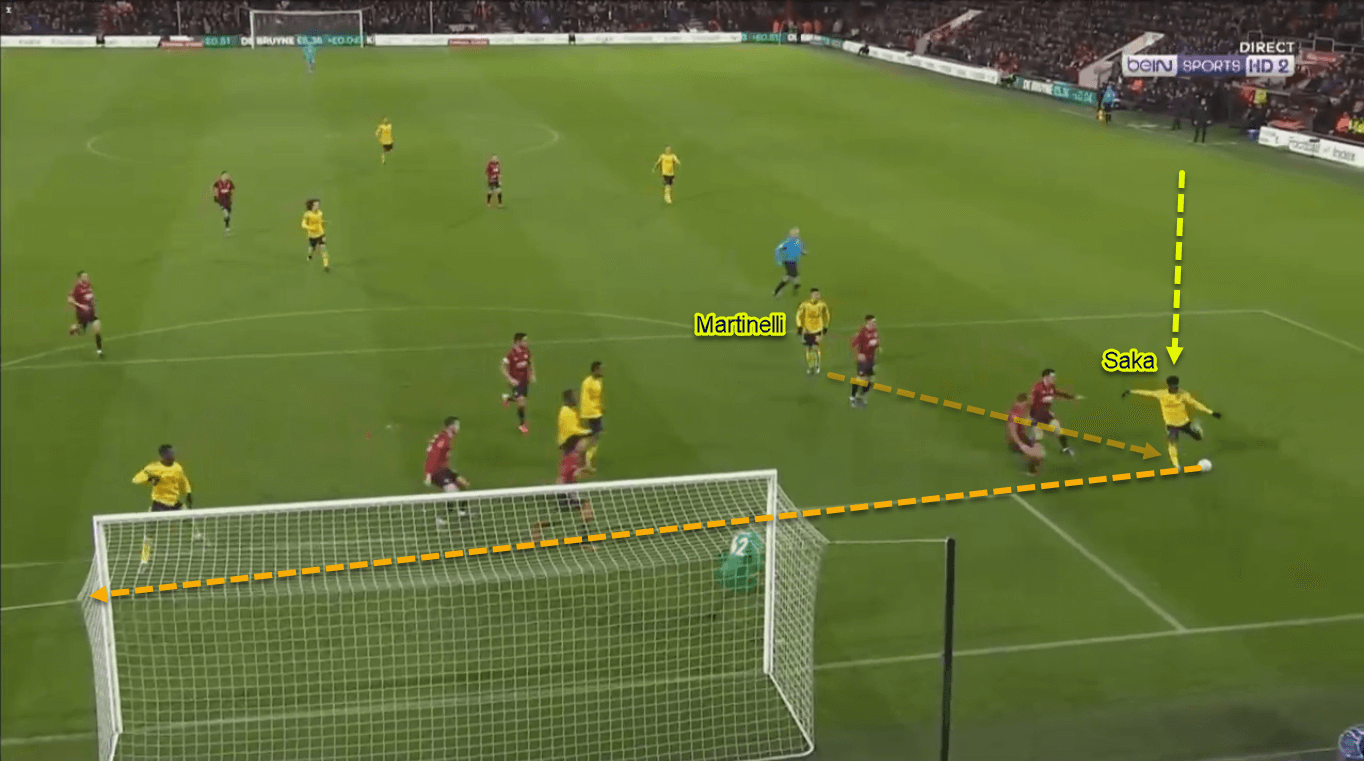
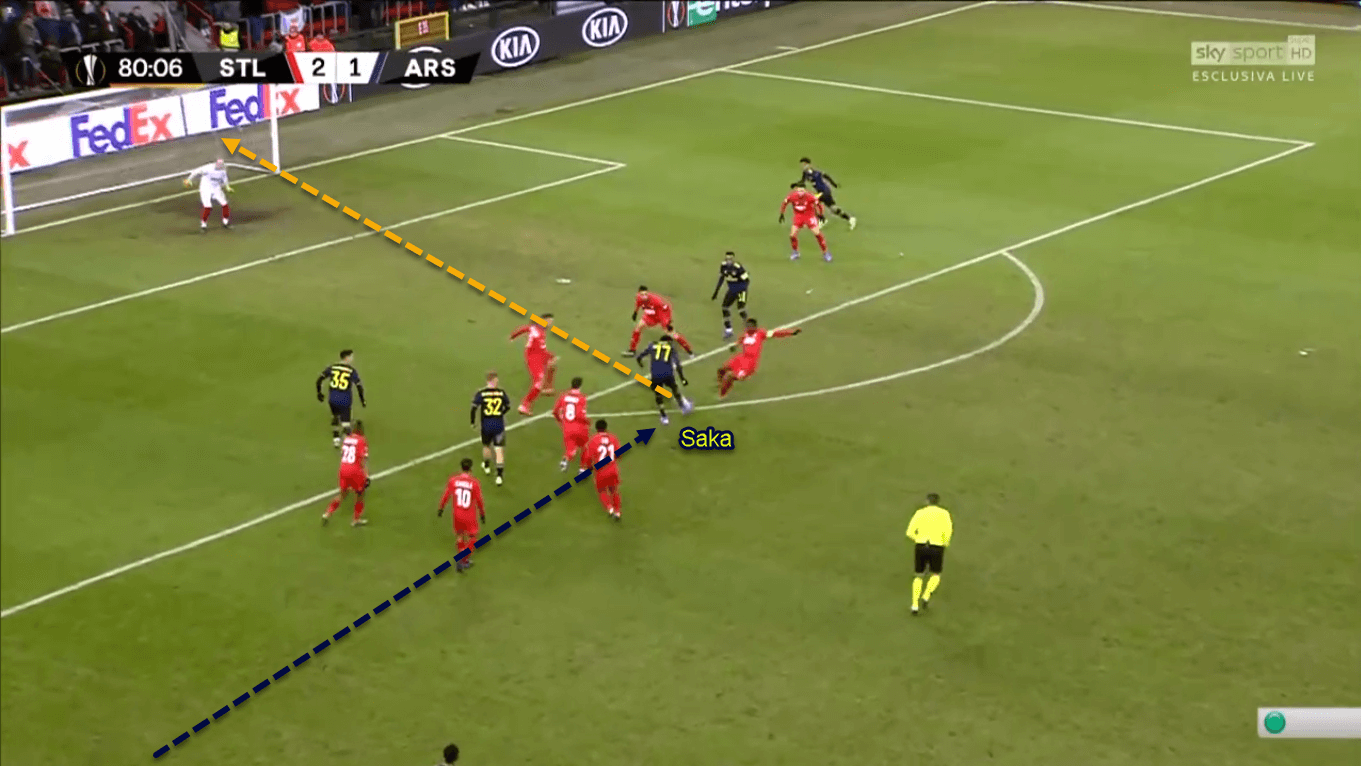
Useful in transition
Not only good on the ball, but Saka also has a trailblazing pace in his armoury. The particular trait would be handy in transition, either to retreat to the defensive line or to make a rapid counter-attack.
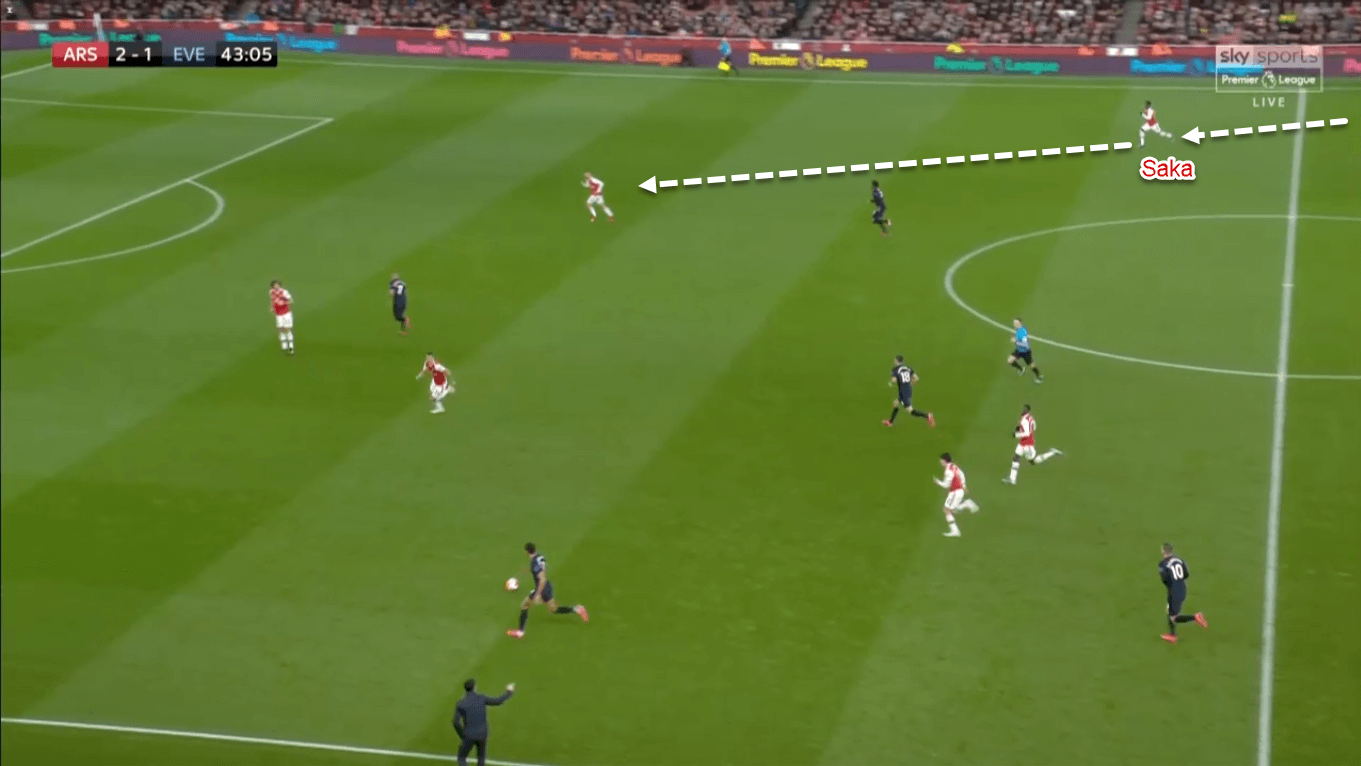
When coming back to defend, Saka would rarely rush into tackles. Instead, he would try to close down the on-ball opponent and limit his space. Arteta’s defensive tactics were the main reason behind this. Looking at the stats, Arsenal only average 16.2 tackles per game in this campaign. The tally is the eighth-lowest across the Premier League.
In the offensive transitions, the Englishman’s anticipation and game-reading ability are
beneficial for his team. Not only that, but he could also use his pace to get into the final third quicker. When participating in the counter-attacks, Saka doesn’t need a lot of touches in the final third. Quite often he would use his first touch to send the crosses in. His reluctancy to dwell on the ball will be explained further in the next part of this scout report.
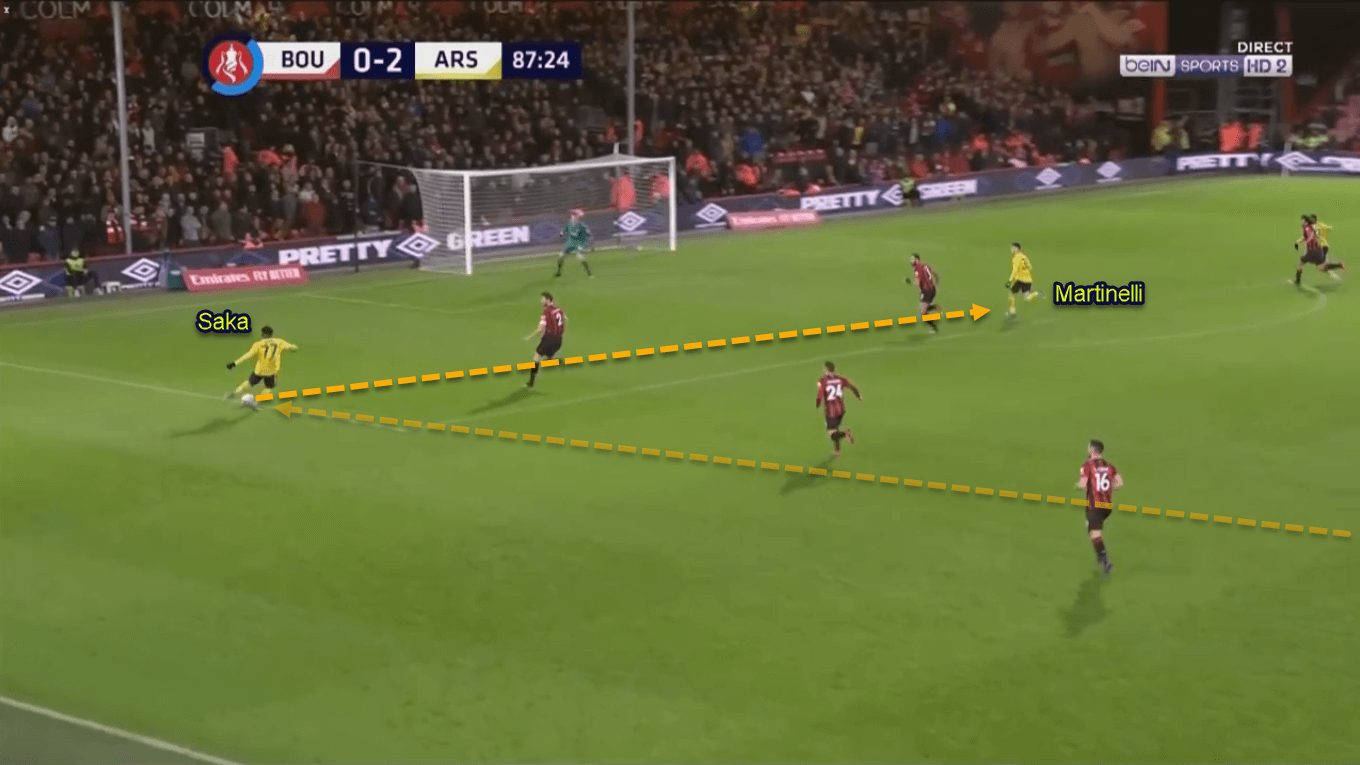
Simple, yet effective
Some say simplicity is the ultimate sophistication. Probably the saying can be applied to
Saka. When having the ball, Saka doesn’t need a lot of touches to bring it forward. Mainly, he prefers to use one-touch combination or wall-passes when progressing the ball.
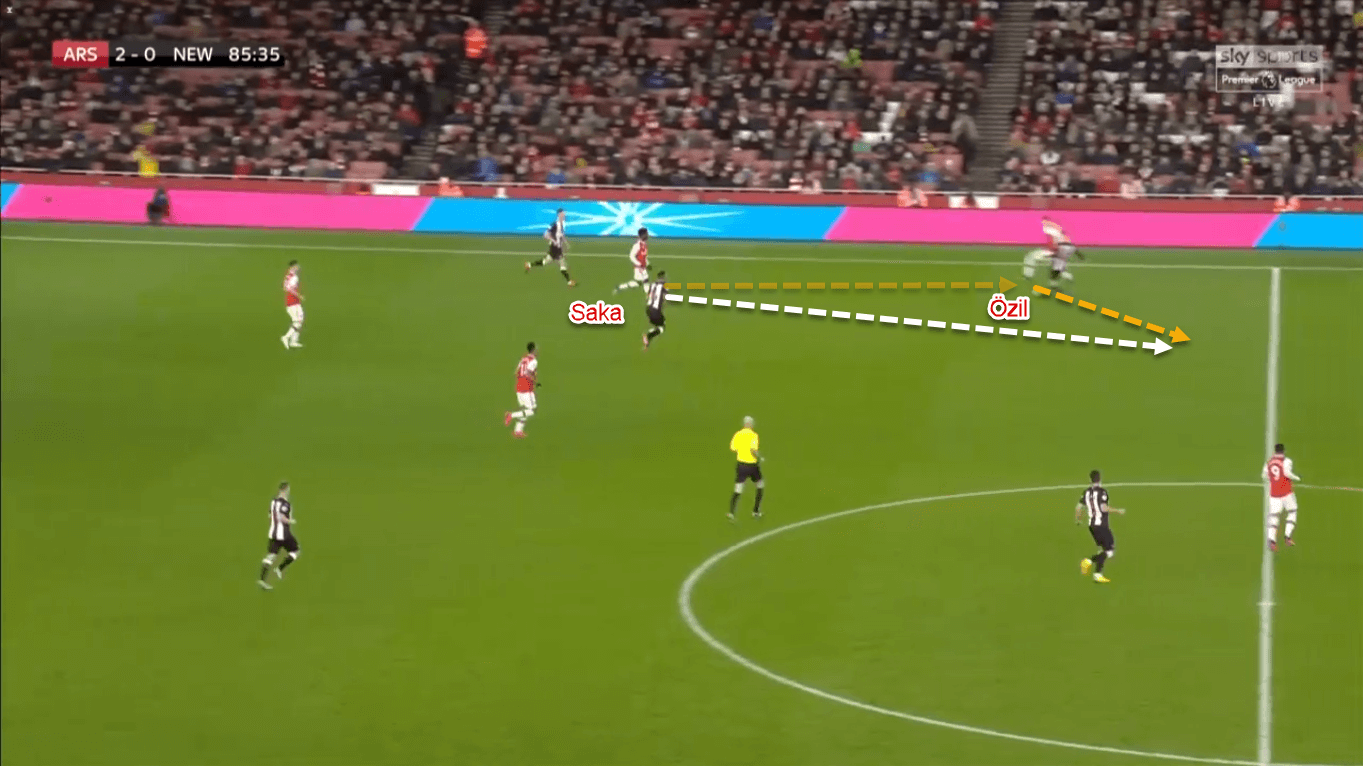
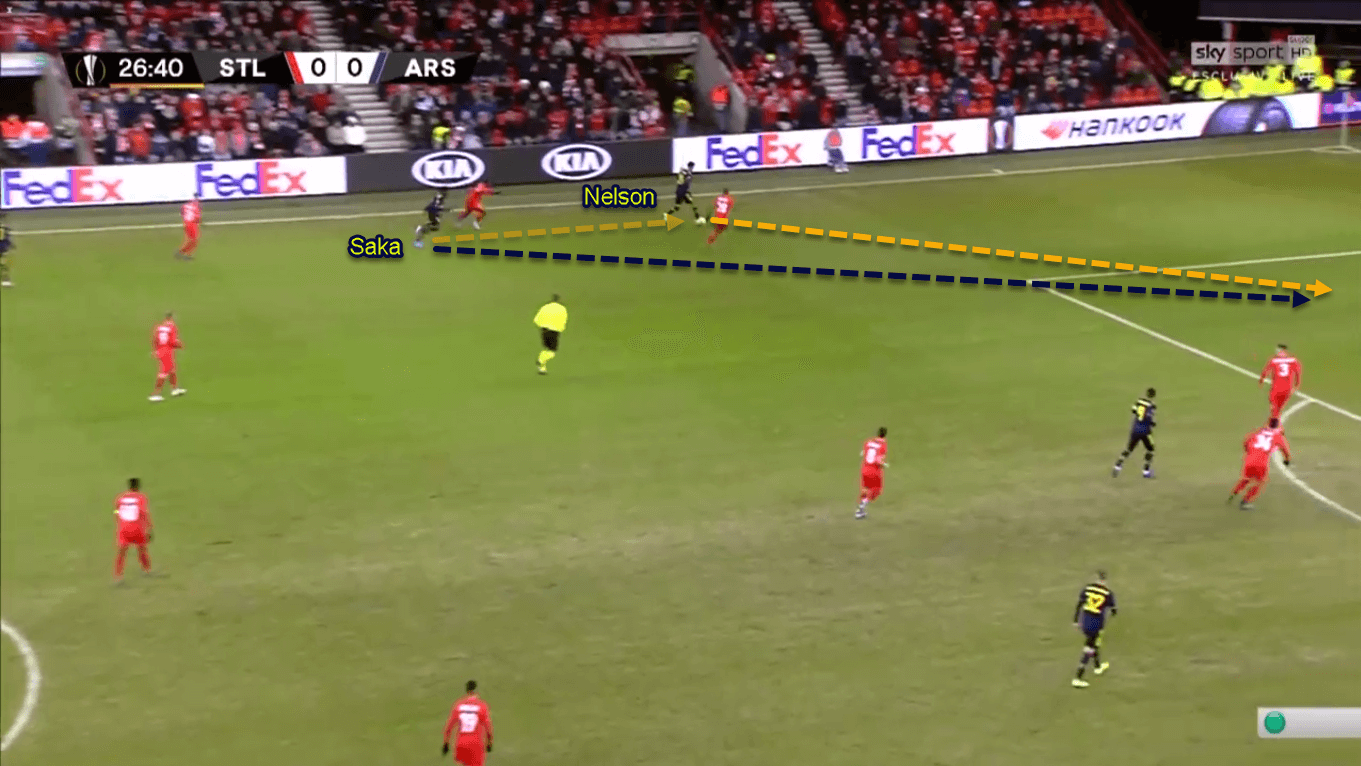
Furthermore, Saka would utilise his pace a lot on possession. He prefers to knock the ball forward past the defender then run with it, instead of taking unnecessary risks. Another option is by finding a nearby teammate rather than dribble his way in to break the defensive block on his own.
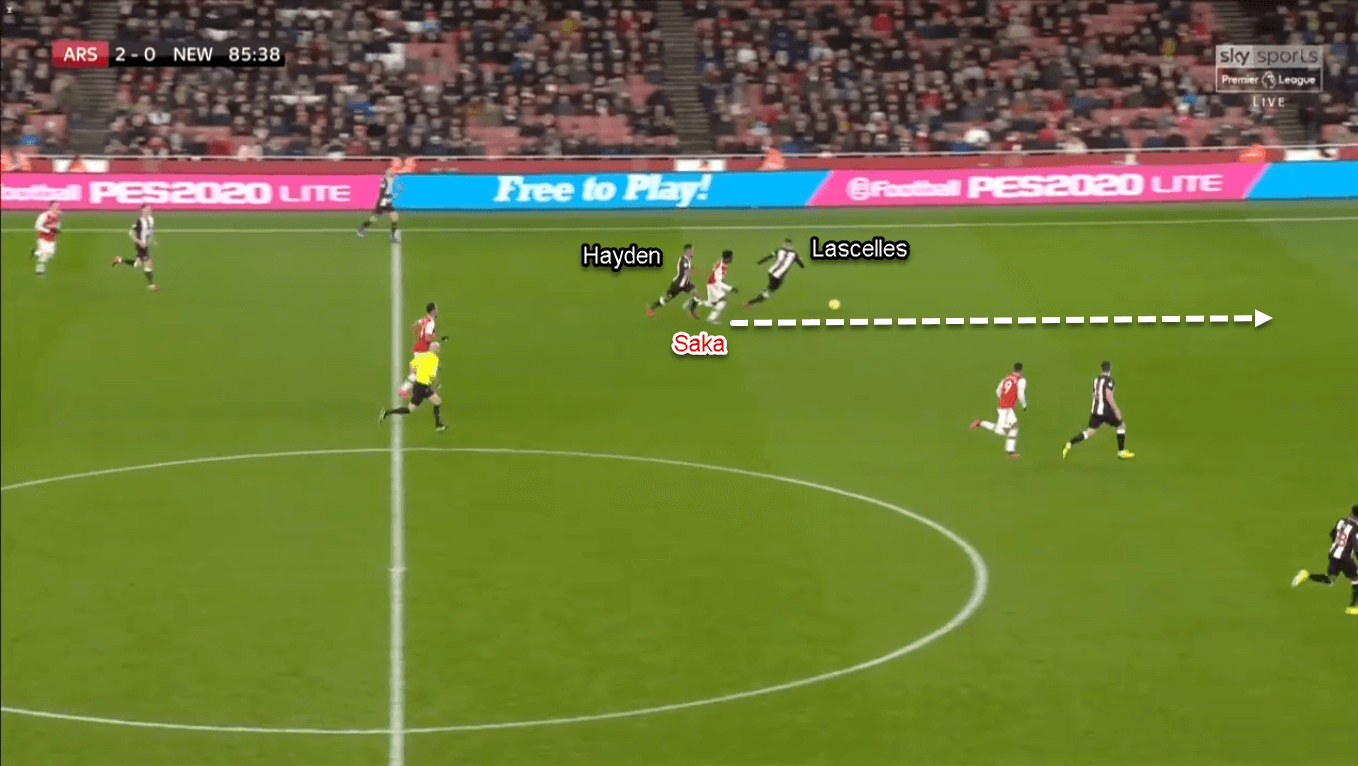
Despite his tendency to utilise space, Saka is quite calm when he’s surrounded by multiple opponents. He could protect the ball as well as escaping from hard pressure whenever needed. On top of that, Saka also has some flair in his dribbling game. That is his tendency to knock the ball between the defenders’ legs; also known as the nutmegs. Per the statistics, Saka has made six nutmegs this campaign. The most notable was when he nutmegged Valentino Lazaro before assisting Nicolas Pépé in Arsenal’s 4–0 victory against Newcastle earlier this year.
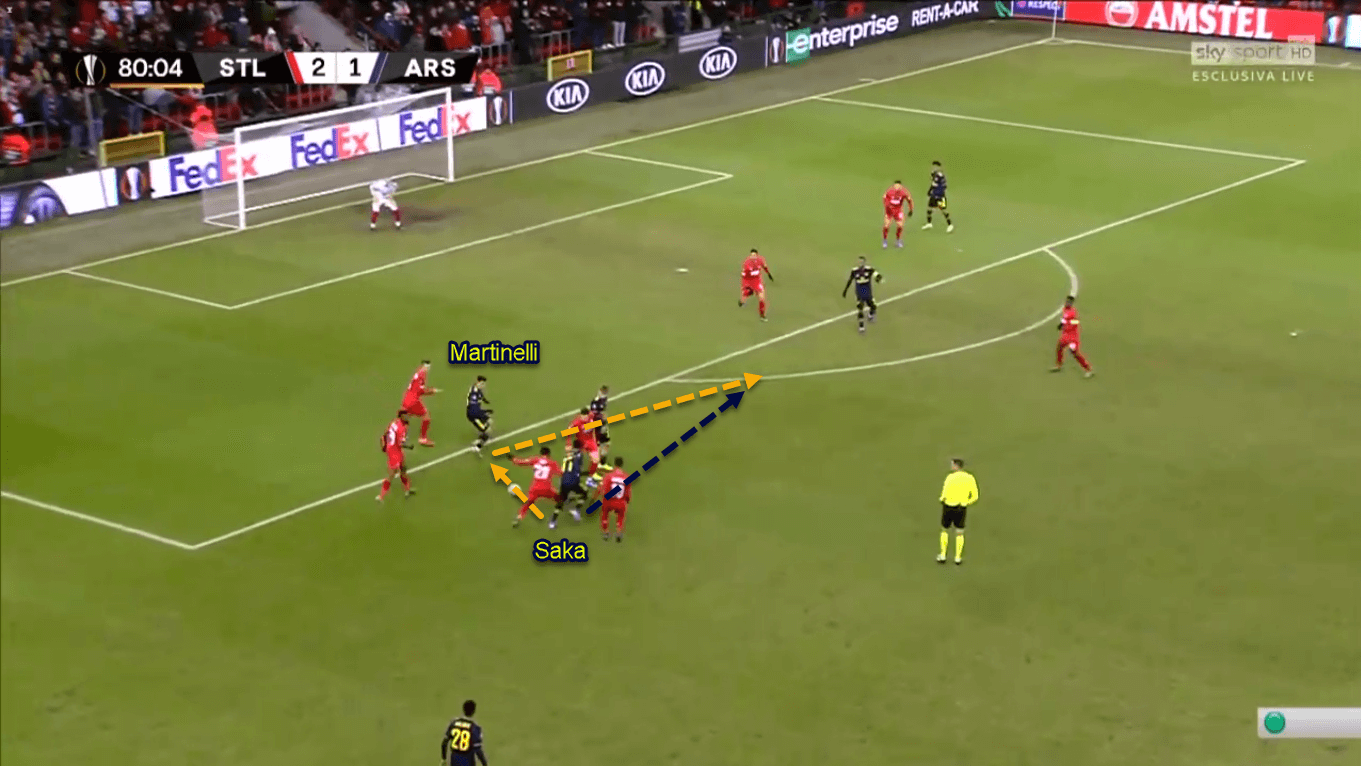
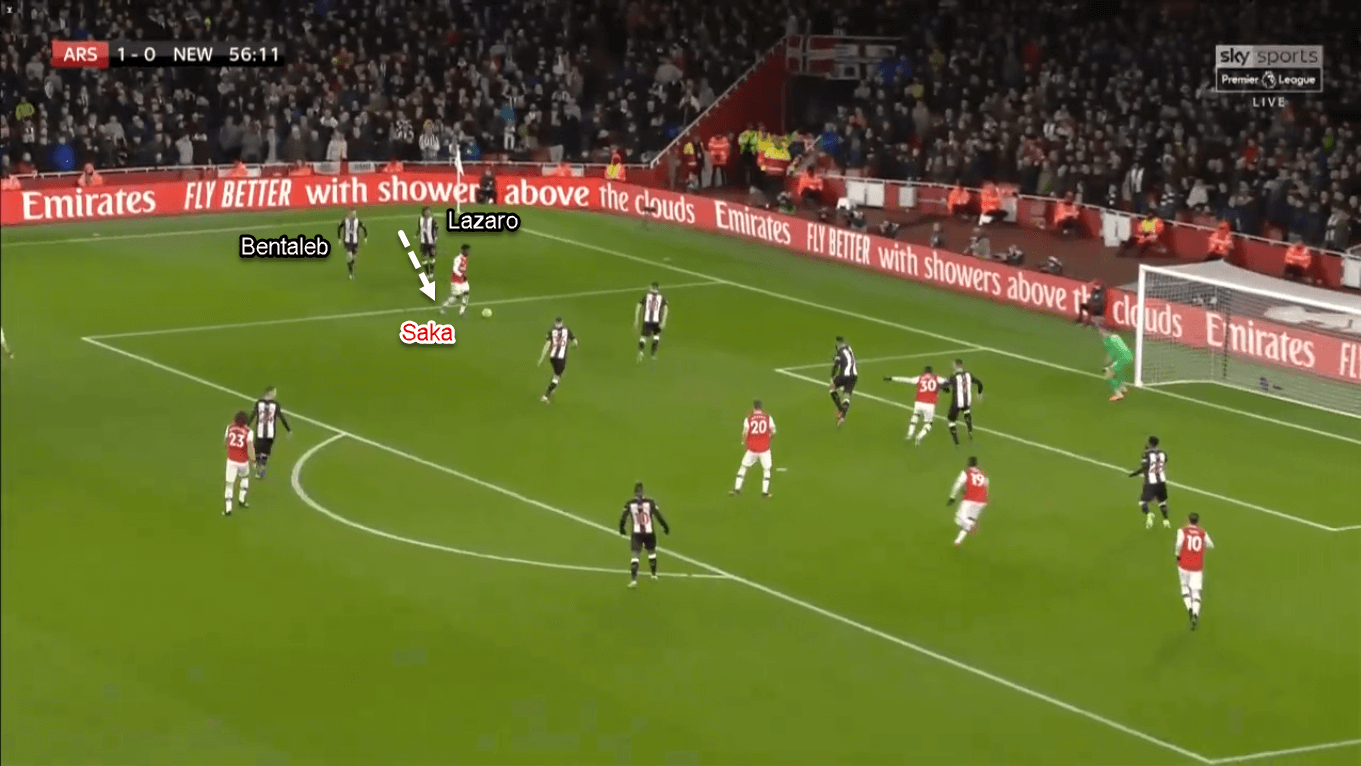
Potential issues
Saka stands at 178 centimetres. Despite his regular height, he weighs only at 65 kilograms; Arsenal’s third-lightest player this season. The 18-year-old lacks physicality — especially upper-body strength — could be exploited by the opponents. One way to do that is by using a floated cross to the far post, where Saka plays as a left-back. Another option is by using the route-one approach to Saka’s playing area.
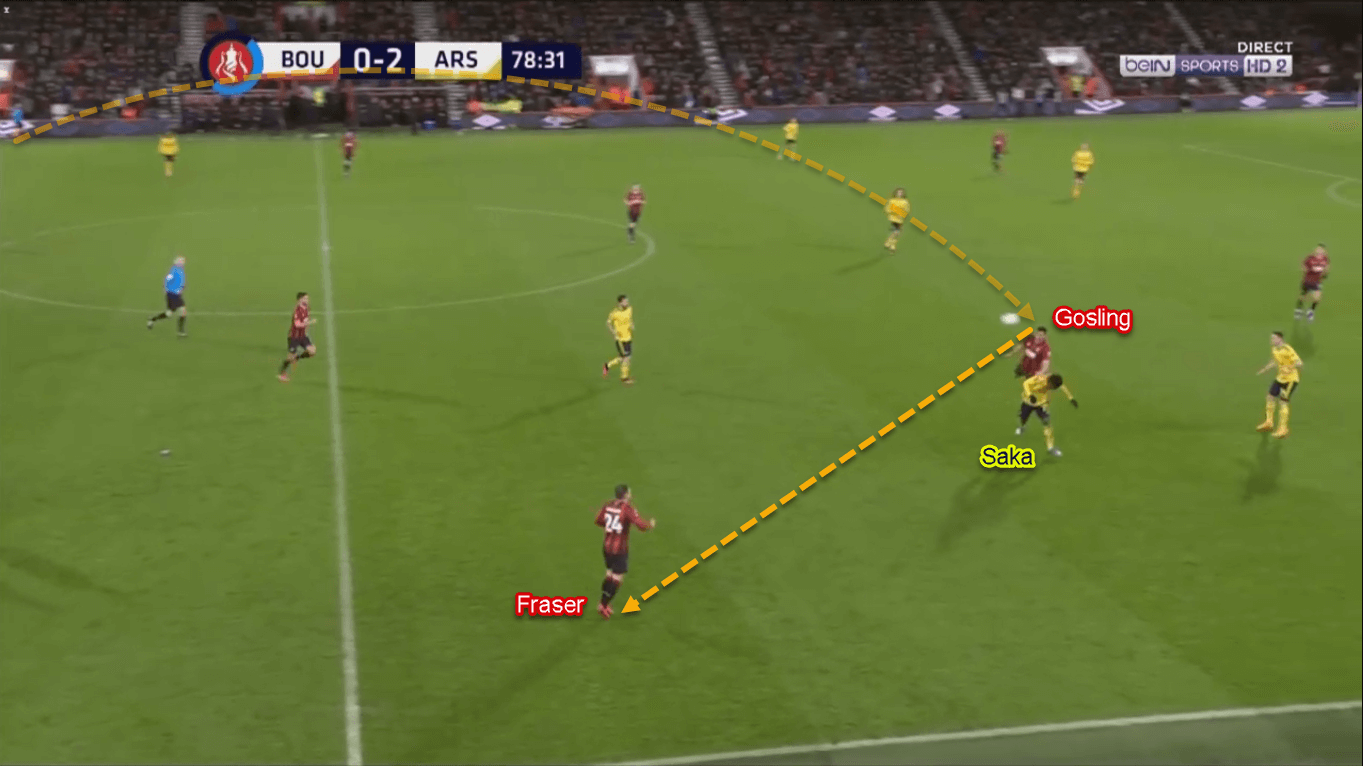
Moving to the attacking side, Saka also has an issue with his game. The youngster rarely use feints, trickery, or sharp turns to beat the defender. Instead, he tends to only knock the ball then utilise pace and space. On top of that, he doesn’t use his right foot often in his dribbles; making him more predictable in a one-versus-one situation. To this day, Saka has attempted 2.3 dribbles per game in the Premier League. However, only 0.9 (39.13%) of them were successful.
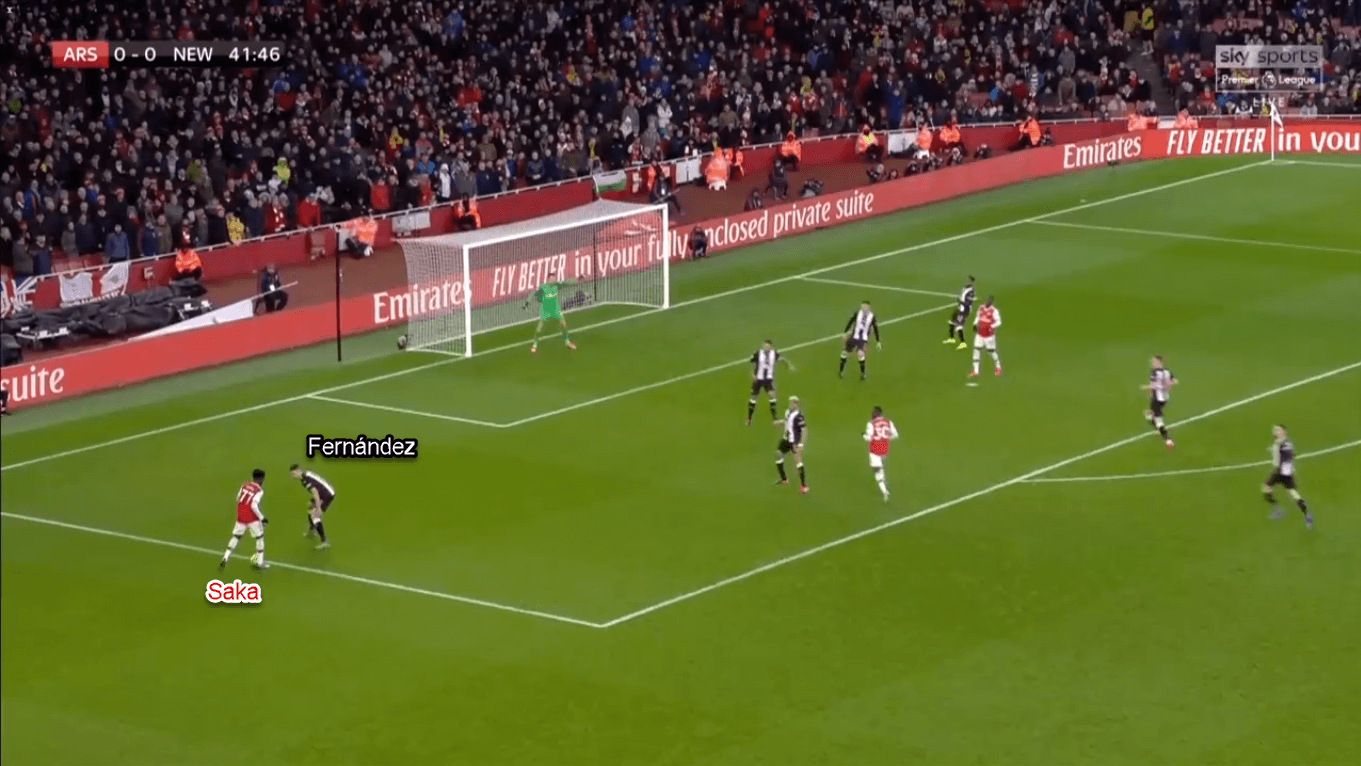
Conclusion
‘The Little Chili’, a suitable nickname for the explosive teenager. His quickness and service quality in the final third makes Saka one of the hottest young prospect in England. With nine assists so far, the 18-year-old could finish this season with double digits; a respectable achievement even for prime-aged players.
Despite that, Saka needs to build some muscle and improve his game-reading ability to be better in physical duels. The youngster also needs to add some agility as well as trickery to make him more unpredictable in the final third. If he continues his form and develops his game, it would be a no brainer for Gareth Southgate to give him a spot in England’s Euro squad next year.

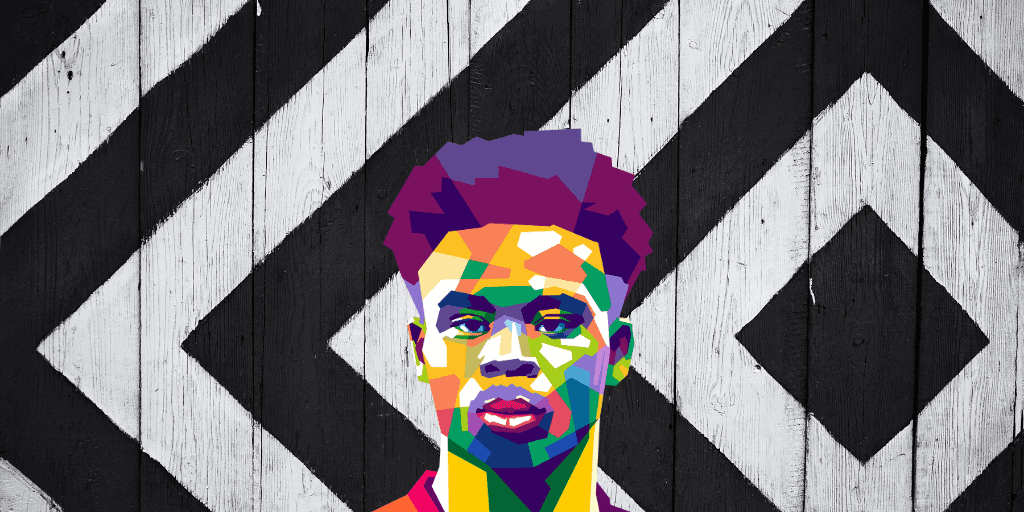



Comments